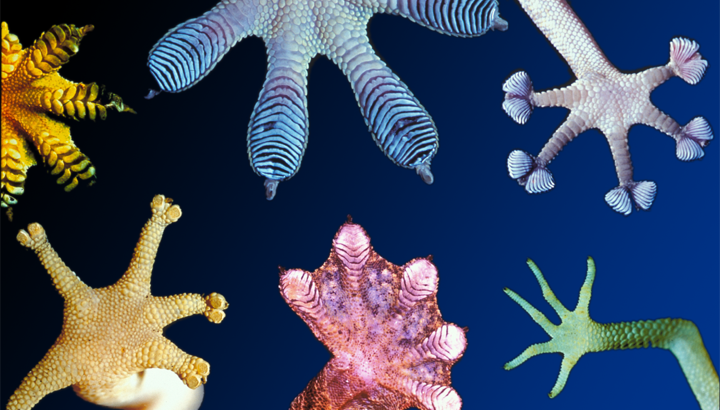Why back when Simon was an undergraduate at Lewis & Clark College his first experience with the research in biomechanics was working with Prof. Kellar Autumn (visit him here!) to figure out how geckos stick. It turns out that gecko feet are covered in millions of tiny hairs called setae. Each of these hairs branches into 100-1000 spatulae each of which is narrower than the wavelength of visible light (< 300 nm)! Before this project, research had shown that intermolecular forces binding the gecko’s setae to the surface are responsible for adhesion, but it was not yet known whether polar or non-polar, van der Waals interactions, are ultimately responsible. Together with our collaborators, we were able to formulate a simple experiment using semiconductors of different surface properties to separate polarity from polarizability (i.e. van der Waals interactions). The results of this experiment conclusively demonstrated that van der Waals forces are the predominant mechanism in gecko adhesion. Van der Waals forces are actually based on quantum mechanical properties of the materials, specifically the degree of stretchiness, or polarizability, of the electron cloud surrounding the individual molecules. Thus in order to fully understand the principle of how geckos adhere to walls, we had to consider the quantum mechanics of their feet. Application of this research by engineers at Berkeley and Stanford (as well as many other groups) has led to the development of biologically-inspired synthetic adhesives that adhere like gecko pads. These have even been put on robotic climbers.
